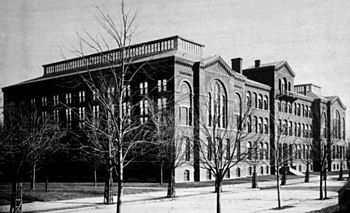
Walter Reed was a U.S. Army physician who in 1901 led the team that confirmed the theory of Cuban doctor Carlos Finlay that yellow fever is transmitted by a particular mosquito species rather than by direct contact. This insight gave impetus to the new fields of epidemiology and biomedicine, and most immediately allowed the resumption and completion of work on the Panama Canal (1904–1914) by the United States. Reed followed work started by Finlay and directed by George Miller Sternberg, who has been called the "first U.S. bacteriologist".

Brigadier General George Miller Sternberg was a U.S. Army physician who is considered the first American bacteriologist, having written Manual of Bacteriology (1892). After he survived typhoid and yellow fever, Sternberg documented the cause of malaria (1881), discovered the cause of lobar pneumonia (1881), and confirmed the roles of the bacilli of tuberculosis and typhoid fever (1886).

The Walter Reed Army Medical Center (WRAMC), officially known as Walter Reed General Hospital (WRGH) until 1951, was the U.S. Army's flagship medical center from 1909 to 2011. Located on 113 acres (46 ha) in Washington, D.C., it served more than 150,000 active and retired personnel from all branches of the United States Armed Forces. The center was named after Walter Reed, a U.S. Army physician and Major who led the team that confirmed that yellow fever is transmitted by mosquitoes rather than direct physical contact.

Tropical medicine is an interdisciplinary branch of medicine that deals with health issues that occur uniquely, are more widespread, or are more difficult to control in tropical and subtropical regions.

William Crawford Gorgas KCMG was a United States Army physician and 22nd Surgeon General of the U.S. Army (1914–1918). He is best known for his work in Florida, Havana and at the Panama Canal in abating the transmission of yellow fever and malaria by controlling the mosquitoes that carry these diseases, for which he used the discoveries made by the Cuban doctor Carlos J. Finlay. At first, Finlay's strategy was greeted with considerable skepticism and opposition to such hygiene measures. However, the measures Gorgas put into practice as the head of the Panama Canal Zone Sanitation Commission saved thousands of lives and contributed to the success of the canal's construction.
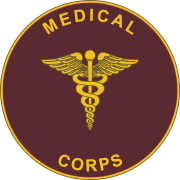
The Medical Corps (MC) of the U.S. Army is a staff corps of the U.S. Army Medical Department (AMEDD) consisting of commissioned medical officers – physicians with either an M.D. or a D.O. degree, at least one year of post-graduate clinical training, and a state medical license.
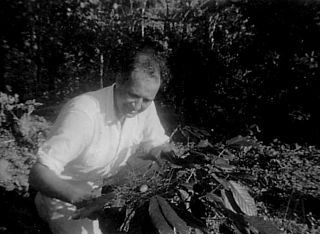
Wilbur George Downs, was a naturalist, virologist and clinical professor of epidemiology and public health at the Yale School of Medicine and the Yale School of Public Health.

Aristides Agramonte y Simoni was a Cuban American physician, pathologist and bacteriologist with expertise in tropical medicine. In 1898 George Miller Sternberg appointed him as an Acting Assistant Surgeon in the U.S. Army and sent him to Cuba to study a yellow fever outbreak. He later served on the Yellow Fever Commission, a U.S. Army Commission led by Walter Reed which examined the transmission of yellow fever.
Major Walter Reed (1851–1902) was a U.S. Army physician celebrated for work establishing that yellow fever is spread by mosquitoes.

The Walter Reed Army Institute of Research (WRAIR) is the largest biomedical research facility administered by the U.S. Department of Defense (DoD). The institute is centered at the Forest Glen Annex, in the Forest Glen Park part of the unincorporated Silver Spring urban area in Maryland just north of Washington, DC, but it is a subordinate unit of the U.S. Army Medical Research and Development Command (USAMRDC), headquartered at nearby Fort Detrick, Maryland. At Forest Glen, the WRAIR has shared a laboratory and administrative facility — the Sen Daniel K. Inouye Building, also known as Building 503 — with the Naval Medical Research Center since 1999.
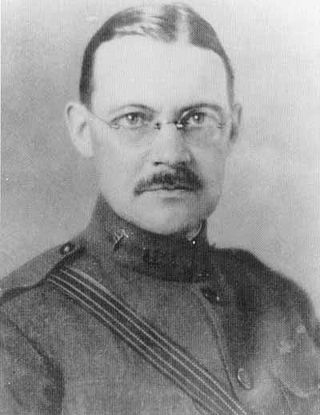
Edward Bright Vedder was a U.S. Army physician, a noted researcher on deficiency diseases, and a medical educator. He studied beriberi, a deficiency disease affecting the peripheral nerves, and established an extract of rice bran as its proper treatment.

Colonel Joseph Franklin Siler, MD (1875–1960) was a U.S. Army physician noted for investigations of mosquito transmission of dengue fever in the Philippines and for Marijuana Smoking in Panama, one of the first experimental reports on cannabis.

The Armed Forces Institute of Pathology is the main Pakistani institution for defensive research into countermeasures against biological warfare. It is located in the vicinity of CMH Rawalpindi alongside the Armed Forces Institute of Cardiology in Rawalpindi Cantt, Punjab, Pakistan. Established in 1957, the AFIP, supported by civilian and military pathologists, has been engaged in the task of combating virus outbreaks in Pakistan.
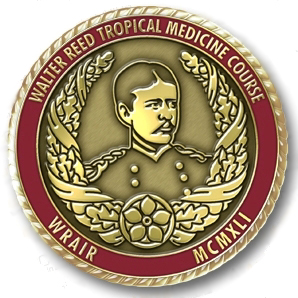
The Walter Reed Tropical Medicine Course at Walter Reed Army Institute of Research (WRAIR) is one of the many Tropical Medicine Training Courses available in the US and worldwide. It is an intensive 5-day course and a 3-day short course, created to familiarize students with tropical diseases they may encounter overseas. The course is open to Physicians, Physician Assistants, Nurse Practitioners, ESO, 18D, or other medical personnel. The course is run by the military and designed for personnel of the US Military and several other US government agencies.
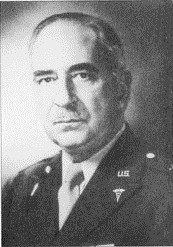
Brig. Gen. George Russell Callender (1884–1973) was an American physician and army officer. He was the commandant of the Medical Department Professional Service Schools in Washington, D. C., founding commandant of the Walter Reed Tropical Medicine Course.
George W. Hunter III was a parasitologist and educator with the US Army Sanitary Corps and Army Medical School. He is best known for his work with Schistosoma control and with the Tropical Medicine Course at the Army Medical School. The textbook he helped create for the Tropical Medicine Course now is the leading reference text for Tropical Medicine and the title bears his name.

Building 40, Army Medical School is a Georgian revival structure in the Walter Reed Army Medical Center complex in northern Washington, D.C., USA. It was built between 1922 and '32 to house the Army Medical School, which became the Army Medical Center in 1923 when it — under the name “Medical Department Professional Service School” (MDPSS) — combined with the Walter Reed General Hospital. The MDPSS ultimately became the Walter Reed Army Institute of Research, which occupied Building 40 from 1953 to '99. It comprises four wings, known as the Craig (1924), Sternberg and Vedder (1932), and Siler (1962) Pavilions and is situated at 14th and Dahlia Streets.
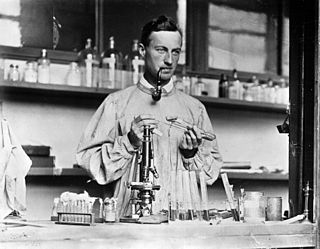
Herbert Durham was a British physician and distinguished scientist.

Percy Moreau Ashburn was a colonel and medical officer in the United States Army. With then Lieutenant Charles Franklin Craig, Ashburn made the link that mosquitoes were involved in the transmission of Dengue fever. As a major, he served as the sixth commanding officer of the Walter Reed General Hospital, and as a colonel, he served as the first commandant of the Medical Field Service School at Carlisle Barracks, Pennsylvania.

Brigadier General Charles Henry Alden was a member of the United States Medical Corps and the first president of the Army Medical School.
